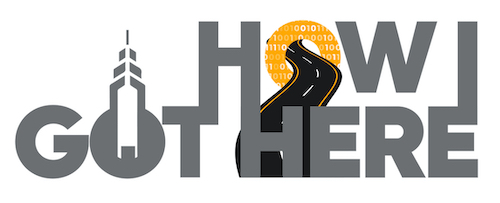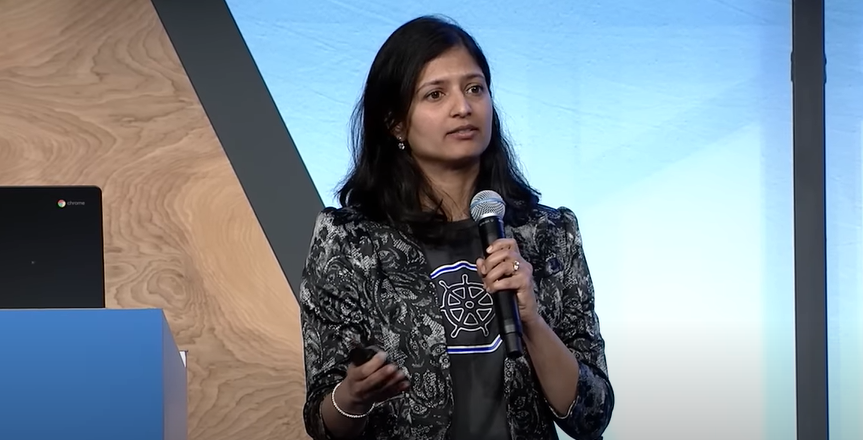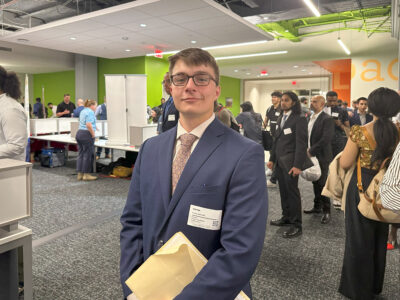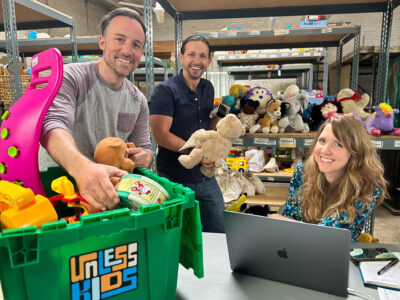Aparna Sinha is a senior vice president at the Tysons Corner-headquartered Capital One, where she’s leading AI and machine learning product development. Based in Silicon Valley, she’s been at the forefront of machine learning and cloud technology for most of her career, including while serving as a Google executive for a decade. Before she started her Capital One role in January, Sinha coached generative AI-focused startups at the Bay Area firm Pear VC.
At Capital One, she leads the initial design of AI programs and their implementation, as well as solicits feedback from the company’s teams on what would most help them.
“We are deeply optimistic about the positive potential that continued innovation in AI — when developed thoughtfully and responsibly — can enhance the customer experience,” she said.
Sinha spoke to Technical.ly about her journey in Silicon Valley technology leadership roles, her current work and her advice for people wanting to follow a similar career journey.
This Q&A has been edited for length and clarity.
What was the beginning of your professional tech journey?
I have worked as a technologist my entire career. I earned a Ph.D. in engineering from Stanford, worked briefly in McKinsey’s business technology office, and spent the bulk of my career in product and technology leadership roles in Silicon Valley.
I spent 10 years at Google as an executive, including leading the Kubernetes product group and the developer experience unit for Google Cloud. Some of the work my teams at Google delivered included machine learning- (ML) driven customer service applications for Android, Play and Gmail, support for AI workloads in Kubernetes, and AI-assisted developer tooling on Google Cloud — including the precursor to what is now Gemini Code Assist.
Most recently, before Capital One, I took on a timely role incubating generative AI startups at Pear VC, a venture capital firm in Silicon Valley. This was just as San Francisco was becoming the epicenter of AI innovation.
You’re now Capital One’s head of AI product. What does that entail? What does your day-to-day look like?
I lead AI and ML product development for Capital One, and we do this in close partnership with engineering, AI research and line of business teams across the company.
The crux of my day-to-day work comes down to four key areas: first, partnering with leaders and teams across the business to understand how AI could provide value and customer benefits to their business. We’re also focused on developing and evolving our enterprise-wide platforms, and processes in AI and ML to push state-of-the-art AI capabilities to our associates.
My team is involved from initial design through road-mapping, to implementation and adoption of these capabilities. Third, but equally important, is helping maintain and cultivate a risk-centered and responsible posture across all of our work. Lastly, my team and I are focused on helping communities across Capital One with resources, education, best practices and insights to thoughtfully realize the potential of AI and ML. …
My team and I are focused on recruiting top talent from the West Coast to the DMV region, and continuing to provide training and development for associates to both enter into new AI and ML career pathways and to stay at the forefront of skills in the space.
Why did this position stand out to you? Why focus on AI?
I have worked on enterprise software and cloud services for a long time. As I worked with generative AI startups last year, it became clear to me that the greatest opportunity for this technology is at forward-leaning enterprises that have an organized and modern approach to their data.
Capital One is that rare enterprise that is cloud-native, extremely data- and ML-driven, and entrepreneurial. And being in the financial services industry gives us a unique position to do [this work] responsibly, and in a risk-managed way, so we can benefit the financial lives of our millions of customers. As a result, the opportunity for invention and impact here is unmatched.
What are your goals in this role?
My overarching goals are to continue to cultivate cutting-edge AI and ML product and technical capabilities across our team; to continue to forge strong relationships and partnerships with our lines of business to create enduring value; and to ensure we continue to take a risk-centered, well-managed approach to AI that keeps our customers and associates at the forefront.
Throughout all of this, it’s also deeply important to me to foster a work environment where all of our associates feel included, recognized and can do the most innovative work of their careers.
Does your work ever bring you out to Capital One’s headquarters? What keeps you in California?
I love the DMV region and it was definitely a perk of my joining Capital One! Between meetings with my team and my business partners, I’m fortunate to travel to the DMV quite frequently.
I also have deep roots in California and live here in Palo Alto with my family. I completed my undergrad and graduate degrees here, and love the energy of the technology and startup scene in the Bay Area. My team is geographically dispersed, with associates in California, the DMV and many places in between — like New York and Chicago — which enables me to get out to all of these areas to connect with them.
I feel fortunate to enjoy the best of all these regions in my role and I think our team is stronger as a result of this geographic diversity.
More companies are creating these AI-centered roles. Why is this important? Should companies prioritize this?
At Capital One, we have a long history of using data, technology and analytics to deliver superior financial products and services for millions of customers.
Our investments in this space, along with our deep experience in ML, mean we are well-positioned to be among the leaders in enterprise AI. We’ve already been leveraging AI and ML to deliver critical value to our customers and the business in areas like fraud mitigation.
What do you do outside of work?
I live in Palo Alto with my husband and our two kids. My oldest is now looking at colleges, which is exciting, so we just wrapped up college tours during spring break. I also really enjoy ballroom dancing, especially waltz and polka, and doing yoga in my spare time.
What tips would you give people who want to follow in your footsteps?
Read, network and create — find tech blogs, research papers and experts you can talk to about topics that interest you in AI. Continue cultivating that curiosity for what you’re passionate about. Try new things like hack-a-thons and online tutorials.
Networking is also key — connecting with like-minded students, researchers, engineers and other experts in the space. Lastly, test, learn and experiment! Build things and lean in where you can with LLMs, GPTs and chatbots.

This is How I Got Here, a series where we chart the career journeys of technologists. Want to tell your story? Get in touch.
Before you go...
Please consider supporting Technical.ly to keep our independent journalism strong. Unlike most business-focused media outlets, we don’t have a paywall. Instead, we count on your personal and organizational support.
Join our growing Slack community
Join 5,000 tech professionals and entrepreneurs in our community Slack today!






